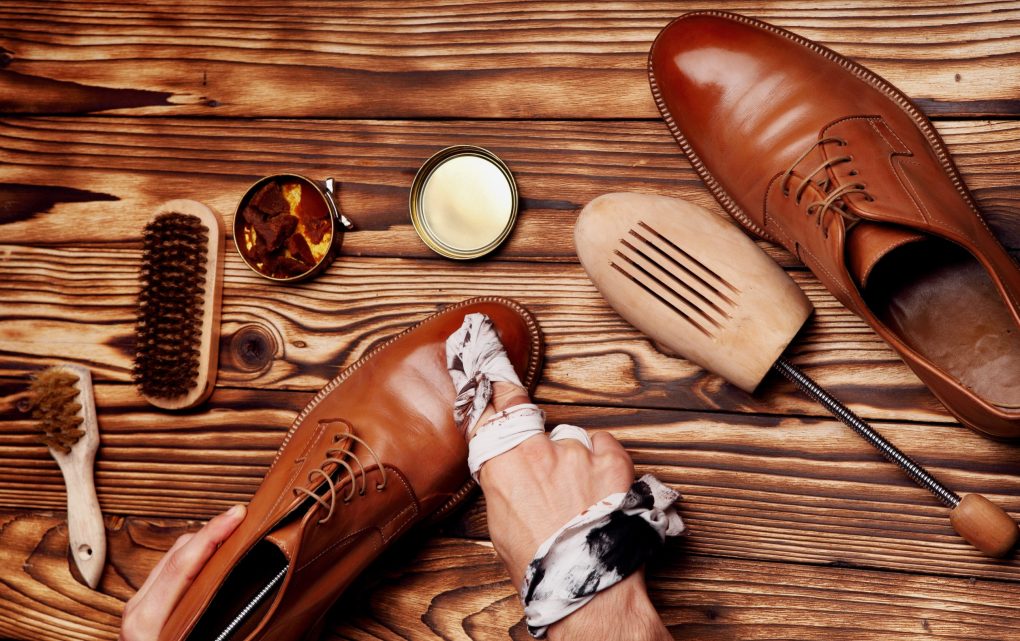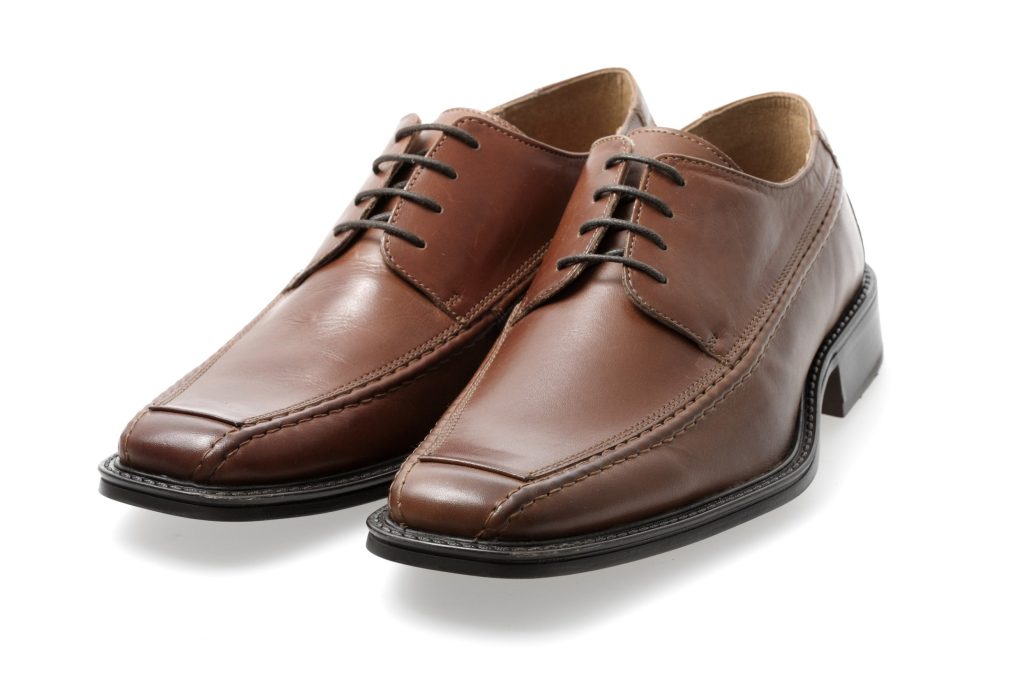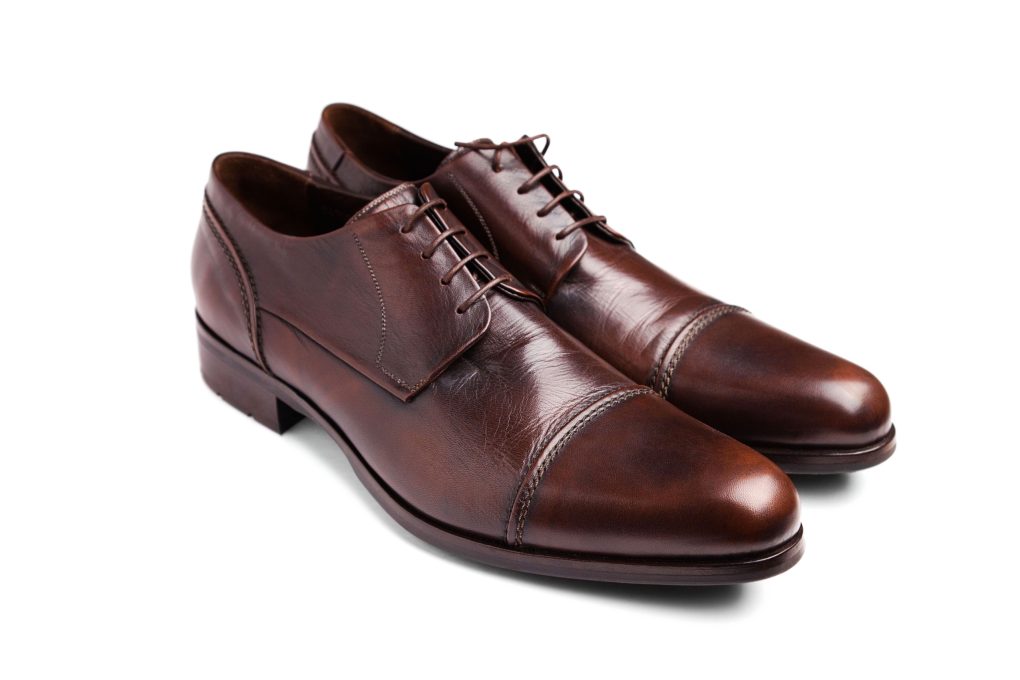Will Shoe Polish Dye Leather: Pros and Cons of Dyeing Leather With Shoe Polish
Yes, you can use shoe polish to dye leather, but there are more effective and durable methods. Shoe polish is designed to add a temporary shine and protect the leather from moisture and dirt, but it is not intended for use as a dye. Therefore, using a leather dye made explicitly for that purpose is best.
Leather dyes are available in various colors and are formulated to penetrate the surface of the leather, providing a more permanent and uniform color change. For example, to dye leather using a leather dye, you will need to clean and prepare the leather, apply the color according to the manufacturer’s instructions, and allow it to dry completely before using the item.


Pros of Using Shoe Polish on Leather
Nice Effect
There are several benefits to using shoe polish on leather:
- Shine: Shoe polish can help restore the luster of leather shoes, making them look more polished and presentable.
- Protection: Shoe polish can help protect the leather from moisture and dirt, which can cause it to become stiff and discolored over time.
- Conditioning: Some shoe polishes contain conditioning agents that help keep leather soft and supple, preventing it from becoming dry and brittle.
- Color enhancement: Shoe polish can help restore the color of soft leather, making it look more vibrant and refreshed.
Nice Texture
One of the best ways to give your leather a nice, uniform color and feel is by using an agent that contains dye. This will result in leather with a consistent color that won’t fade or rub off over time. Plus, the shade leaves a soft feeling that enhances your leather goods’ aesthetic value.
Leather care doesn’t have to be complicated – use soap and water! Unlike other methods (e.g., waxing), which can damage synthetic materials, this method is safe for natural and artificial leathers.
Boost Water Resistance
Leather is a natural material used for shoes, bags, and other accessories. It can be resistant to water and stains, but shoe polish can help make it even more water-resistant.
Shoe polish also has the added benefit of keeping your shoes looking new for longer – perfect if you’re constantly on the go! In addition, shoe polish can be used as a stain remover on darker leather colors. So why not give it a try? There’s no harm in trying something new!
Helps Remove Scuffs
Shoe polish is an excellent tool for removing scuffs, surface marks, and other stains from leather. It leaves a matte finish that is hard to remove – perfect if you want your shoes to stay clean and look good for longer! Shoe polish can help hide minor scuffs and scratches on leather, making shoes look newer for a short period. However, it is not a permanent solution for removing scuffs from leather.
If the scuff is particularly stubborn, you may need to use a leather repair kit or take the item to a professional leather repair specialist. However, it is essential to be gentle when removing scuffs from leather, as using too much force or abrasive cleaners can damage the surface of the leather.
It is also a good idea to test any cleaning or repair products on a small, inconspicuous area of the leather before using them on the scuffed site to ensure they will not cause further damage.
Cons of Using Shoe Polish on Leather
Uneven Dyeing
When dyeing leather items, it is essential to consider that shoe polish can cause uneven dyeing. As a result, you may end up with patches of different colors on your shoes and even scratches or blemishes on their surface.
We recommend using food coloring or henna ink instead of shoe polish when dyeing leather items to avoid such problems. Both dyes are much safer and will give consistent results every time.
Color Transfer
Polishing leather accessories with shoe polish can lead to a funky color transfer. While this might be fine for everyday shoes, it could be more of a problem if the color is solid. In such cases, it’s best to stick to traditional polish for leather accessories. And remember – always test the area you’re planning on applying the polish to first!


To avoid color transfer when using shoe polish, it is crucial to follow the manufacturer’s instructions and allow the polish to dry completely before wearing the shoes or handling them. It is also a good idea to avoid wearing the shoes when they come into contact with light-colored surfaces or materials, such as carpets or upholstery.
If you accidentally transfer color from shoe polish onto another surface, you may be able to remove it using a cleaner or solvent specifically designed for that type of material. For example, you can use a carpet cleaner to remove shoe polish from a carpet or a leather cleaner to remove it from leather.
Non-Permanent Dye
Shoe polish can add temporary color to leather, but it is not a permanent solution for changing the color of the leather. The color from shoe polish may fade or rub off over time, especially with wear and exposure to moisture.
Shoe polish is applied to the leather’s surface, creating a thin film that adds color and shine. However, this film is not durable and may rub off or fade over time with wear and exposure to moisture.
In contrast, leather dyes are specifically designed to penetrate the leather’s surface and permanently change the leather’s color. Leather dyes are available in various colors and are formulated to provide a more permanent and uniform color change.
Unbreathable
Using shoe polish to clean leather can lead to several problems. Firstly, the polish will make the leather unbreathable, which in turn will cause it to dry out and become brittle. When shoe polish is applied to leather, it can create a barrier on the surface of the leather that may reduce its breathability to some extent.
This can lead to cracks or splits in the leather and coloration due to dye getting trapped in the pores. Ultimately, this can significantly damage the shoe’s surface and render it unusable.
However, the effect of shoe polish on the breathability of leather shoes is minimal and will depend on the specific type of shoe polish and the thickness of the application. In most cases, leather shoes treated with shoe polish will still be breathable to some extent and will not significantly affect the comfort of the wearer.
Less Resilient
Shoe polish contains various chemicals that can harm the leather in the short and long run. If you try dyeing your leather with shoe polish, the results will not be desirable. The dye might not take well to the chemicals in shoe polish and may end up causing stains or fading. However, safer and more effective methods are available if you want to dye your leather – for example, using traditional dyes or waxes.
Time-Consuming
Shoe polishing is a time-consuming task that takes up much of your time. It can take as many as 2 hours to polish your shoes properly, and if you have many of them, it will take even longer. Not only that, but shoe polish is also expensive – around $15 per bottle! You’ll need to budget for this chore in the long run.
It is essential to take your time and be thorough when applying shoe polish, as this will help to ensure the best results and prolong the life of your shoes.
Alternative Materials When Dyeing Leather
Henna (Red-Orange Color)
Confirming with Natural Dyes, Henna is a natural dye used to get the red-orange color on leather. It is not permanent and will fade over time, but it provides a fantastic look for your leather items. You can also use henna to dye other fabrics such as cotton, wool, etcetera. Henna is easy to apply and takes around 30 minutes to dry completely.
This dye can produce a range of colors on leather, from red to brown to orange, depending on the leather type and the dye mixture’s strength. However, the color produced by the henna dye is less vibrant and long-lasting than that produced by commercial leather dyes.
The henna dye can also be challenging to apply evenly to leather and may fade or rub off over time, especially with wear and exposure to moisture. For these reasons, using henna dye to color leather is usually not recommended.
Turmeric (Yellow-Orange Color)
Turmeric is the perfect solution if you are looking for an easy and inexpensive way to dye your leather shoes in various colors. This natural dye can color both suede and leather shoes in shades such as black, brown, yellow, orange, light purple, dark purple, or green.
Make sure to use enough turmeric – more will give you the desired results, and more might spoil your shoe polish. And remember that turmeric will only dye the surface layer of the leather – it won’t penetrate deep into the fibers. Instead, you’ll get beautiful footwear with a subtle but distinctive yellow-orange hue!
Coffee (Dark Brown)


Using coffee is one of the best options if you want to dye your leather a dark brown. This will work best if your leather is dry and hasn’t too much oil. Be patient – this process may take several hours to complete.
To dye leather with coffee, mix ground coffee with a liquid (such as water or vinegar) to create a paste. Then, apply the paste to the leather using a brush or sponge, and allow it to sit for several hours or overnight to allow the color to penetrate the surface of the leather.
It is important to note that coffee dye can be difficult to apply evenly to leather and may produce uneven or blotchy results. It is also not a permanent or reliable method for coloring leather and may only be suitable for some types of leather.
Acorns (Black)
You can use acorns to dye leather, but it could be more practical and reliable. Acorns contain tannins, natural compounds that can be used to tan leather. However, using acorns to dye leather is time-consuming and requires a lot of preparation and effort, and the results may need to be more satisfactory.
To dye leather with acorns, you must gather and prepare many acorns and then crush them to release the tannins. Next, you will need to soak the leather in a solution made from crushed acorns and water for several days or weeks to allow the tannins to penetrate the surface of the leather.